There's plenty of information on what to do with unused IO-pins on a microcontroller. You can set them to a floating output, ground them, or pull them up to Vcc or down to ground. However I can't find any information on what to do with non-IO pins. Do the same rules apply to those, or can they simply be ignored when they're not being used?
EDIT: Sorry for being unspecific. The microcontroller I am using is a Microchip PIC18F4550, and it has a Vusb-pin (non-IO). I was looking for a general answer for how to treat non-IO pins, but I guess it's specific to the individual pins.
